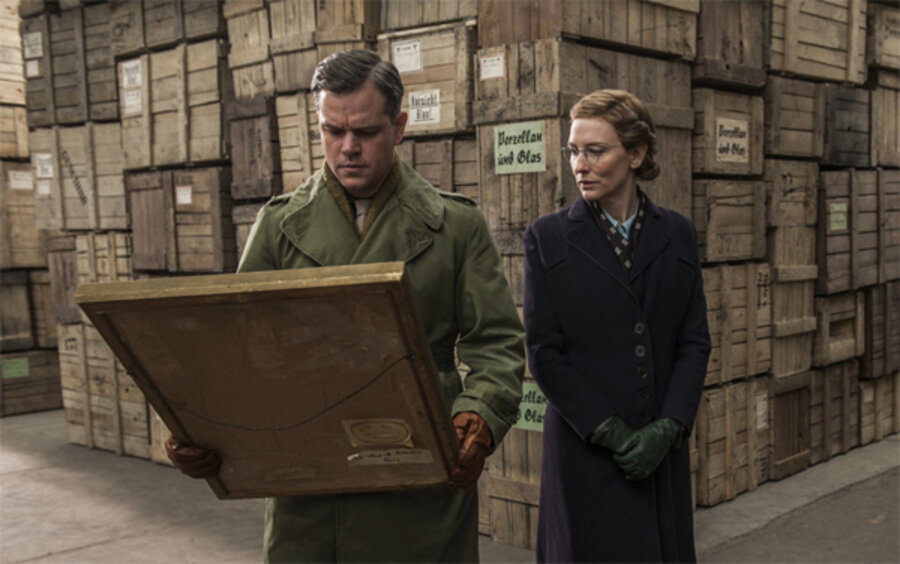'The Monuments Men' is lackluster despite a great premise and cast
Loading...
As “The Monuments Men” plodded along, I kept asking myself why a movie with such a great subject, with such a good cast, was so lackluster. Based, as they say, on a true story (the source material is a book by Robert M. Edsel), it’s about a cadre of art historians, sculptors, theater impresarios, and restorers who served the Allied cause by rescuing stolen masterpieces from the Nazis in the waning days of World War II.
Heading up the team is Frank Stokes, played by George Clooney, who also directed and co-wrote the script (with Grant Heslov). Along for the mission are men played by Bill Murray, Jean Dujardin, Bob Balaban, John Goodman, Hugh Bonneville, and Matt Damon. Since none of these men are striplings, much wheezy humor is expended on how unschooled they are in the ways of war. It’s like an over-the-hill gang variant on “The Dirty Dozen,” except not as much fun as that sounds.
The central question posed by the movie, over and over again, is: Should anyone risk his or her own life, or the lives of others, trying to save a masterpiece? The answer here appears to be a qualified “yes.” Frank makes puffed up pronouncements to F.D.R. about how “art is the very foundation of modern society.” I would have felt better hearing this if the filmmakers had shown a bit more reverence for the great art they so meagerly place on display.
Cate Blanchett, complete with cutting-edge French accent, turns up as Claire Simone, based on the real-life art curator for Paris’s Jeu de Paume museum. Suspicious at first of the Monuments Men, she warms to Damon’s James Granger, even giving him a fancy tie as an enticement for some ooh-la-la. Claire spends most of the movie looking gaunt and drab – a dead giveaway that there will come a scene when she unlooses her hair, ditches the uncomely specs, and wears lipstick and bright colors. She is, after all, French.
Hot tip: A much better movie dealing with a similar scenario is John Frankenheimer’s 1964 “The Train,” starring Burt Lancaster, about the French Resistance hijacking a shipment of Germany-bound art treasures. Grade: C- (Rated PG-13 for some images of war violence and historical smoking.)







